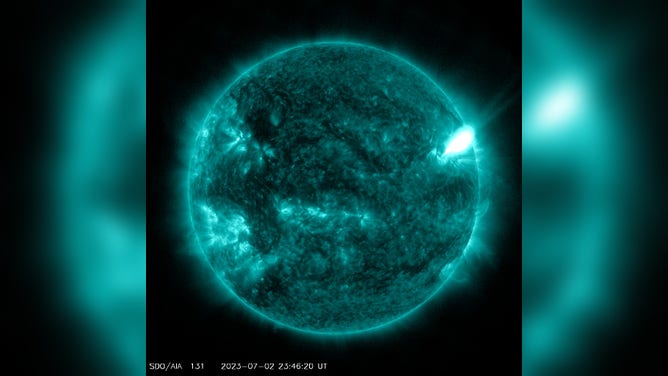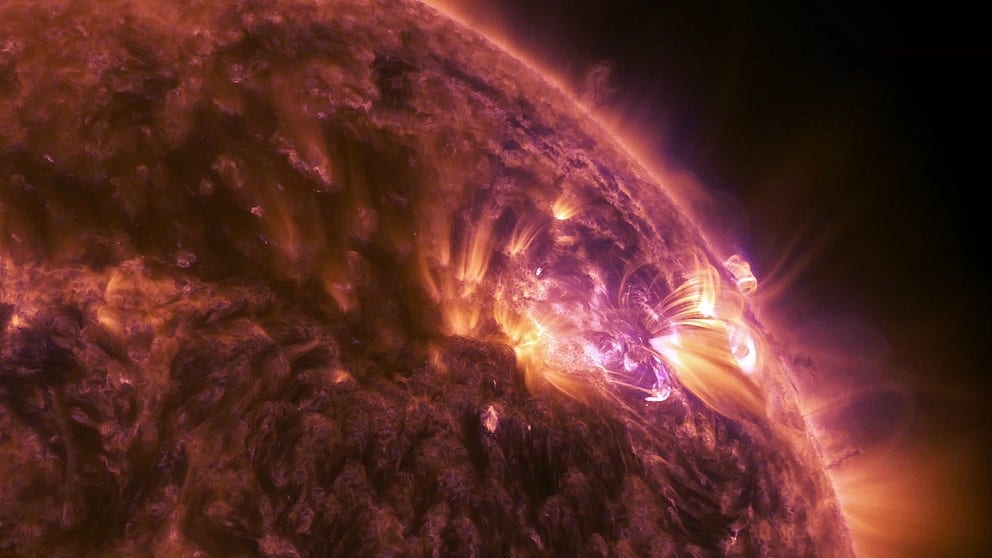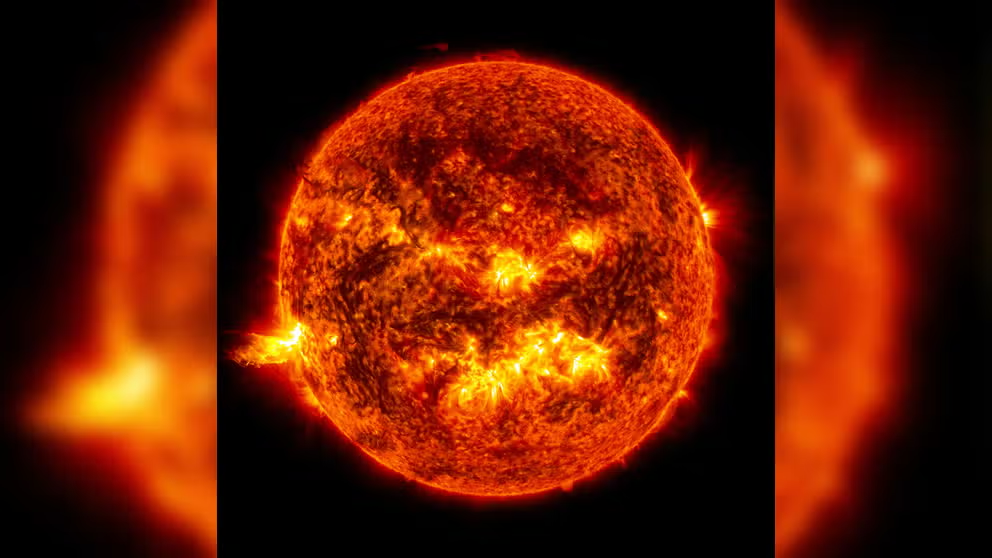Extreme ultraviolet light camera highlights strong solar flare that erupted from Sun on Sunday
The NASA image shows a subset of extreme ultraviolet light that highlights the extremely hot material in flares and which is colorized in teal. The strong solar flare peaked at 7:14 p.m. ET on July 2, according to NASA.
Space weather explained: What is a solar flare?
The largest explosions in the solar system, a solar flare is an explosion of energy that occurs on the sun’s surface, often appearing as a localized burst of bright light.
A strong solar flare erupted from the Sun Sunday evening, and NASA’s Solar Dynamics Observatory caught it on camera.
NASA says that the X1.0 solar flare peaked at 7:14 p.m. ET on July 2. The X-class denotes the most intense flares, while the number provides more information about its strength.
The NASA image shows a subset of extreme ultraviolet light that highlights the extremely hot material in flares and which is colorized in teal.

NASA’s Solar Dynamics Observatory captured this image of a solar flare – as seen in the bright flash on the top right area of the Sun – on July 2, 2023.
(NASA/SDO / NASA)
Solar flares are explosions of energy that occur on the Sun’s surface, often appearing as a localized burst of bright light. The explosion is the rapid release of magnetic energy that builds up in the Sun’s atmosphere, according to NASA.
This energy can travel about 93 million miles to Earth, where it can impact our technology. In fact, radiation from solar flares can disrupt long-distance radio signals, damage satellites and other instruments.
For example, an X2.2 solar flare on Feb. 17 led to a "strong radio blackout" on Earth, according to NOAA’s Space Weather Prediction Center (SWPC). The radio blackout ranked 3 out of 5 on the SWPC radio blackout scale.
How scientists measure solar flares
NASA gives this short narrated video about solar flares, how they are classified, and their effect on Earth. (Video courtesy: NASA)
The most powerful flare in history made much more of an impact. In the fall of 2003, NASA recorded a flare measuring at X28, and it produced particles that bombarded instruments around Earth.
Measuring 5 out of 5 on the SWPC scale, this bombardment forced satellite engineers to switch some satellites to operate in safe mode, NASA said. Plus, astronauts aboard the International Space Station were advised to seek shelter from the elevated radiation levels.
On Earth, airliners were rerouted, and polar routes were temporarily restricted, according to NASA.

